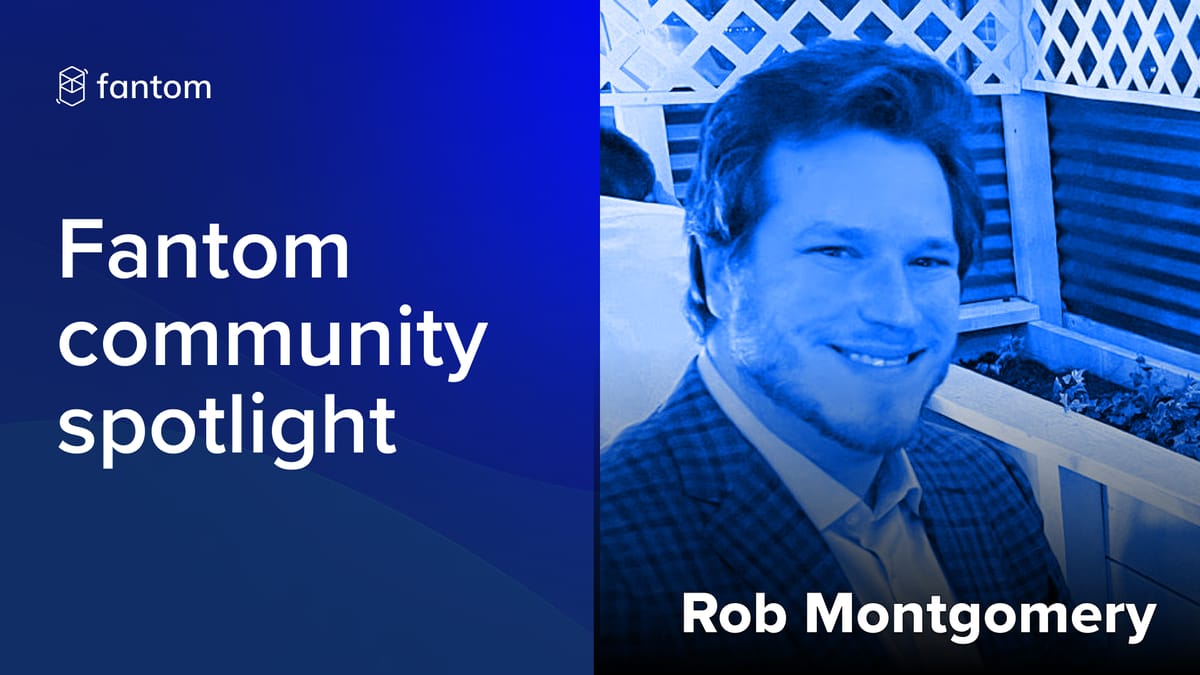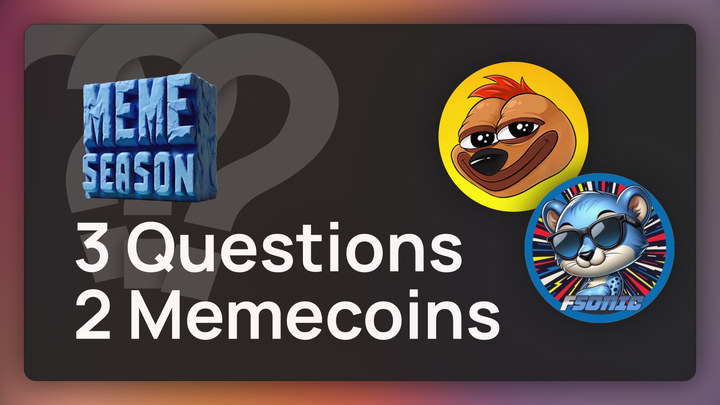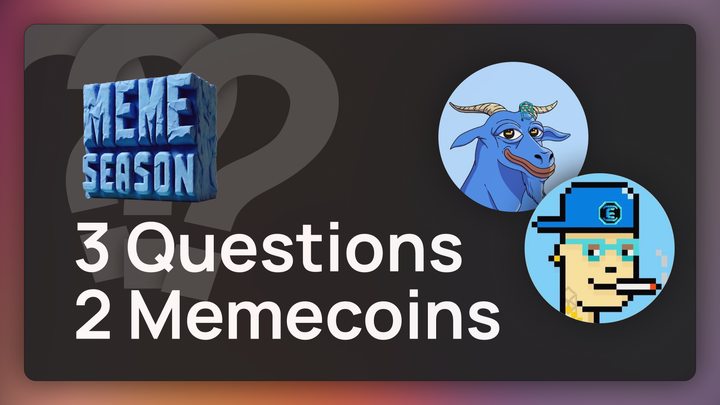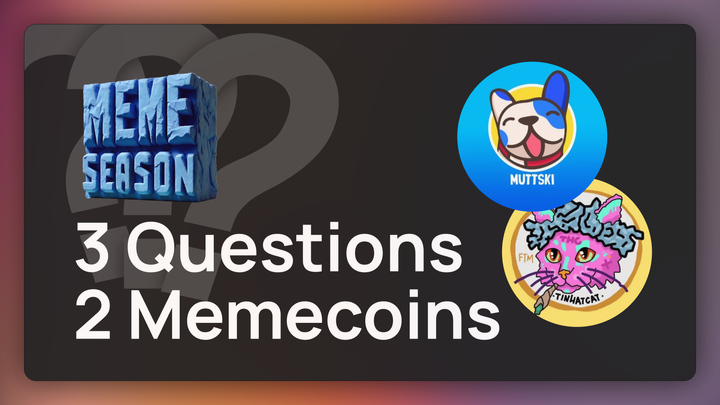Fantom Community Spotlight - Rob Montgomery

Rob Montgomery, CEO of Revest.Finance, shares with us his journey as a DeFi builder, his thoughts on the societal implications of widespread cryptocurrency adoption, and what it’s going to take to build antifragile, censorship-resistant systems.
What were you doing before DeFi?
I’ve always enjoyed entrepreneurship for as long as I can remember, but it wasn’t until high school that I started exploring computer science and development more deeply.
Combining my love for entrepreneurship with my newfound curiosity for development work came from Minecraft: I created a Minecraft mod called “Explosives Plus,” which did exactly what it sounds like, and I made ~$2k on ad revenue off one million downloads. In high school, that was a lot of money!
From there, I went to Georgia Tech to study Mechanical Engineering. I thought about majoring in Computer Science, but didn’t want to sit in front of a computer all day.
As it turns out, mechanical engineers also use computers all day.
From there, I went to grad school for nanotechnology and ended up doing computational work as a thermal engineer, with a focus on nano thermal heat transfer. We were doing work on a computational element for neural networks, and that meant testing it in simulations all day. It wasn’t what I wanted to be doing, and it was also horrible pay.
I even wrote a few papers while in academia, but I just never had my heart in it.
I still believe nanotechnology is the future, but launching a start-up in the field is prohibitively expensive because the overhead costs are so high.
What was it about the concept of cryptocurrency that initially attracted you to it?
As I mentioned, I got into crypto through a Minecraft server I used to frequent. Everybody was talking about crypto there. That was the days of the infamous Silkroad, before mainstream adoption really kicked off.
It was a very libertarian server, so it had a lot of crypto anarchists and anarcho-capitalists— that was a fertile breeding ground for crypto in the early days.
This was in 2012. I didn’t buy any of my own crypto until around spring of 2013, though.
I bought my first Bitcoin through Mt. Gox, when I was still in high school. I went to a popular chain drugstore and I picked up the red telephone they had there. The service allowed you to wire them money using a money-gram.
At that point Bitcoin was $40.
In my high school AP Computer Science course, I got all of my buddies into BTC; we would sit in the back of the class talking about crypto. It was largely philosophical; we formed a Bitcoiners club and a Facebook group for it. Another one of my friends started a poker club using Bitcoin.
I tried to turn my parents onto it, but unfortunately that didn’t work. I sold my bitcoin at $60 because my dad convinced me it had appreciated so much I would be smart in taking profits. At one point I asked him for money to put into BTC and he called me crazy.
All of this led me to realize that everyone says money has real value because somebody else says it does. The government is ultimately the people—the people’s sovereign will—so if the government says a certain money has value, that is in effect its citizens saying a certain money has value.
Bitcoin just accelerated the process of cutting out the middleman.
When I found out FIAT money isn’t backed by anything, I patently accepted that it’s therefore backed by pure faith, much in the same way the government exists because people have ascribed its power to it.
That’s how I knew crypto was the future, and that developing monies in this way would prove much more stable than relying on sovereign government currencies.
Crypto is resilient, global, and secure. It has staying power.
When did you first get directly involved within the blockchain space?
In 2020, I proposed to my wife. We didn’t have a lot of money. The Gamestop saga took place, and it became obvious that the incumbent financial markets were crooked—if not outright corrupt—and people were going to migrate to decentralized cryptocurrencies as soon as they realized this.
Throughout 2021, I was slowly drifting away from my real job and toward crypto, and that’s when I caught onto the concept of NFTs. They can be ridiculous and oftentimes cash grabs, but the underlying tech is impressive.
Art-based NFTs are fun, but they can be volatile, and you don’t always actually own them in the way you might think you do.
My thesis around NFTs was that they would be used to attribute ownership of something, and it wouldn’t necessarily only be art.
That being said, I did make an art NFT. I had an equation—from my minecraft days—that allowed you to create a Thomas attractor, which is a chaotic attractor. Chaos theory is based on unique patterns in incredibly complicated dynamic systems, and even if the patterns never repeat, they have specific points they orbit.
I thought about a way to use this to make an NFT that you could view in 3D space, and that’s how I learned about NFT standards. This later became my first NFT project, the Negative Entropy App, which was a generative art experiment.
The original developer I was counting on fell through, so I spent about two weeks teaching myself Solidity and JS and rendering in Three.js. Since I already had a programming background in Java, it was easy to learn.
The NFT project did well, and I realized I enjoyed the creative freedom working in this space allowed me.
What led you to build Revest?
While exploring Beyond NFT, which is the standard I used for building my NFT app, I saw a site which claimed to be showing a live price feed of BTC within a NFT. When I took a closer look, I realized it wasn’t doing exactly that.
I fired up the computer and spent six hours coding up a web2 app that used web3 endpoints straight off Chainlink to get the price of BTC.
That gave me an idea: if you can use price feeds off-chain, what if you could use them on-chain? And what if you could use them within NFTs?
That’s how Revest started to take shape. We came up with the idea for the timelock, and I wrote most of the code myself. We wanted to create a system to write our own lock, or use a standardized interface for a lock which anyone could create.
I was looking over Aave’s docs on Flash Loans, and I started wondering whether a NFT could issue a call-back if it was withdrawn.
Then we thought: what if the FNFT was just a lock that showed data the other contract needed, and what if we could communicate this to people and make it easy to understand through a standardized interface?
Where are we in the life cycle of crypto and DeFi?
We’re still in the infancy stages. I’m an idealist, and I see the potential for upward mobility and freedom. Where there is corruption in crypto it is forced to survive in perfectly competitive markets, unlike corruption in traditional financial markets.
In the old world, regulation stifles competition. Perfect competition in a traditional market is removed, but in crypto it becomes the bedrock of the system. A good example of this is arbitrage: the crypto ecosystem takes something bad or inefficient and turns it into something that generates money and funds for those involved.
If 1% of Wall Street jumps ship, we double overnight.
A lot of traditional banking has massive capital inefficiencies because their systems are archaic, and especially because they have a direct incentive not to cut out the most inefficient parts of the system—the very people in charge.
In crypto, we’re cutting out the unnecessary fat while creating opportunities for investors and builders to achieve financial independence. Systems built here are inherently more autonomous.
What kind of value do you hope to provide through your services?
First, I want users to enjoy the experience.
That starts with improving accessibility, which means making it easier for people without a formal background to learn how to leverage these instruments.
Investors could be making much better returns if it weren’t for the capital inefficiencies introduced into traditional finance, inefficiencies that have made things complicated and that we’ve just been forced to accept as inevitable reality.
It’s important to increase financial literacy so that people understand what’s happening with their money. Things like derivatives, for example, are quite simple, but they’re made inscrutable by the way the systems around them are designed.
As a builder and founder, what is the most challenging aspect of scaling a team?
I’m trying to find that delicate balance right now, and I’m currently in the process of onboarding talented individuals who can clearly communicate the big picture ideas so that I can focus on building. It’s difficult to find people with this skill set.
I’ve brought on people with whom I’ve worked before in different sectors, and I’m now doing bi-weekly education.
There needs to be ongoing education for the people you’re working with so they’re on the same page as you: at the moment, I’m doing bi-weekly education sessions with my team to ensure we’re all aligned.
The most difficult part of building a successful DeFi project is communication, particularly because it’s mired in complex technical terms that need to be explained clearly and succinctly.
Anecdotally, I’ve found that professionals with business development or sales experience do a great job of filling this gap, and it’s one of the main skills I look for.
How did you decide to take on external funding?
If I did it again, I would make it my goal to avoid working with Venture Capital firms.
I might’ve just released Revest as a tokenless project at the start; I don’t regret the way we did it, but working with VCs was a huge time sink for me and we could’ve spent that time better elsewhere. We had over 30 calls with different VC firms, and many of them just didn’t get it.
That being said, now we have some great VCs on our roster that I enjoy working with; we ended up landing on Kronos.
At first, we were doing a seed round, and that consisted of friends, family, and people who’d purchased Negative Entropy. (I believe in rewarding your community.)
Then we launched our website and were advised to push for a high valuation at launch.
Having been in the industry for a bit now, I can say in retrospect that I don’t think you need VCs. That was just the model of success we’d seen and what seemed like the best option at the time.
The most important thing is that you never want to distribute an equal amount to the seed and public. We did 19% and 33%. We made sure the public had more tokens available to them regardless, and we made sure the tokens for VCs were locked up in a bathtub shaped curve so they would unlock over time.
When raising capital, you have to be careful to balance protecting your community and your seed round investors.
What are some Fantom projects or teams you’re excited about?
LiquidDriver
We haven’t seen anything like LiquidDriver before—by leveraging their size, they’re able to get better rates compared to individual investors utilizing those same yield farms. They’re well on their way to becoming a dominant force in the Fantom ecosystem, and their team is incredibly professional. Dr. Liquid is a very capable leader.
SpiritSwap
The SpiritSwap guys are some of the most dynamic and energetic people building in the space. We’ve got at least a dozen different ideas with them that are currently in development!
I can’t think of any one organization that has quite as many lines of business and features as SpiritSwap has built over the past year. Their output is tremendous.
Byte Masons
The Byte Masons team is already something of an oddity in terms of the dynamic. I’ve only met a few in person, but I get the sense just from talking to them that they’re in total alignment and have the same mission purpose as the others. That’s the mark of a well-oiled machine.
Speaking as a founder, creating that sort of alignment is really difficult, so kudos to Justin for that. Building code is easy, but building people is very hard.
Byte Masons are at least ten steps ahead of where other prominent industry experts are.
PaintSwap
They deeply understand on-chain mechanics as well as the utility of NFTs on-chain and the financial tools they unlock.
They have a vision for how NFTs and financial tools come together to fit into the greater DeFi ecosystem.
To track NFTs in a decentralized manner, you have to have something that tracks the transfers of NFTs, and this is not quite as simple as it would be with a web2 app. PaintSwap is already solving this “indexer problem”, a problem nobody was looking into until very recently.
To put this into perspective, Opensea by nature of being a centralized operation is able to hold this info in its servers, but this comes with all of the risks inherent to centralization.
Expect a lot of innovative products to come out of this protocol.
When it comes to building a decentralized and censorship-resistant system architecture, what should we be prioritizing?
We’re already seeing huge improvements with services such as IPFS, Flex, POKT, and The Graph. All of these services are geared toward decentralizing the very infrastructure DeFi and blockchain technology is built on.
The movement toward decentralization will likely occur gradually, rather than suddenly and sharply. For example, Proof-Of-Stake (POS) is a great idea, but it runs the risks associated with increased centralization if everyone is running their nodes on Amazon or Google Web Services.
At the end of the day, we need to be taking gradual steps to decentralize as much as we possibly can. If done correctly, decentralization can be something that just happens under the surface and doesn’t affect the user experience.
Anything else you’d like to share with the Fantom community?
I evangelize Fantom to every developer I know.
Out of all the blockchains on which I’ve deployed Revest, Fantom is my favorite.
I used to be an Ethereum-native, but have moved over to Fantom because, beyond the amazing tech, this is where the community is. The energy here is much more genuine and welcoming, and it doesn’t feel like an old boys club.
Lastly, I’d like to give a very heartfelt “thank you” to the Fantom community for welcoming me with open arms and turning me into a devoted Fantom evangelist.



